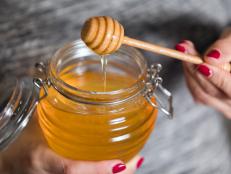Why Eating a Plant-Forward Diet Is Better for Your Health
Getting more plants on your plate is the goal, but you don't have to eliminate animal products completely.

OatmealStories/Getty
Eating more plants is certainly better for your health, but that doesn't mean you need to go vegetarian or even vegan to reap the most health benefits. Healthier eating isn't about taking away animal foods you may love, but rather balancing your plate by adding plenty of plant foods. Below is a look at what plant-forward means and how you can include animal products like lean meat, fish, poultry, and dairy on your plant-forward plate.
What Is a Plant-Forward Diet?
There are many terms around diets that highlight plant-based foods including plant-based, plant-forward and flexitarian, to name a few. Some hospitals and health professionals have come to define “plant-forward” as meaning strict vegan eating or a vegetarian diet. However, only about 5% of American adults consider themselves vegetarian or vegan and approximately 46% of vegetarians are vegan. Ultimately, there is no formal definition of the term plant-forward or plant-based.
As a registered dietitian, I believe that there is no reason to pit foods against each other, especially plants verses animals. I also discourage taking away foods from the plate and encourage adding foods, or even better, have foods complement each other on the plate. There are numerous studies that show that including a combination of both plants and animal foods can reap more nutritional benefits.
According to the 2020-2025 Dietary Guidelines for Americans, 90% of Americans do not meet the recommended daily amount of vegetables and about 85% don’t meet the recommended daily amount of fruit. Certainly adding more fruits and vegetables to your plate will benefit your health.
When filling your plate, it should be mostly composed of plant foods. Half your plate should contain fruits and vegetables and one-quarter of your plate should be starches (including whole grains, potatoes, corn). That last quarter of your plate can contain lean meat or poultry (animal-based) or beans, peas, lentils (plant-based). All the foods on the plate complement the nutrients in the other. That is also why a variety of foods is also recommended.
What the Research Shows
A published modeling study using NHANES data found that a combination of plant and animal foods (dairy in this study) had the best chance of closing nutrient gaps common in American diets. The study examined the nutritional impact of several dietary scenarios by doubling intake of plant based foods, protein-rich plant-based foods (legumes, nuts, seeds) or dairy foods (milk, cheese, yogurt). When the plant-based foods were doubles, people were more likely to meet nutrients needs for iron, folate, magnesium, and vitamins C and E, but less likely to meet nutrient needs for calcium, protein and vitamins A and D. It should be notes that calcium and vitamin D and under consumed nutrients in the American diet per the 2020-2025 dietary guidelines for Americans. When dairy foods were consumed double the amount usually consumed (at 2-4 servings daily) it helped folks reach their nutrient goals for calcium, protein, magnesium, and vitamins A and D. The research goes to show that when you include both animal and plant foods on your plate, you have a better chance of getting in all the nutrients your body needs.
Another study published in the Journal of Human Nutrition examined the effects of lean red meat in combination with higher intakes of fruit and non-starchy vegetables on lipid profiles (which indicate heart health) in older adolescent girls. More than 1,450 girls were followed for 10 years starting at nine or 10 years of age in the National Heart, Lunch and Blood Institute Growth Health Study. The results found that girls who consumed six ounces lean red meat per week or more combined with two or more servings of fruit and non-starchy vegetables per day had lower LDL (bad) cholesterol levels compared to girls with lower intakes of lean red meat and fruit and non-starchy vegetables. Researchers concluded that lean red meat consumption as a part of an overall healthy dietary intake is associated with favorable adolescent lipid measurements (which means better heart health).
Bottom Line: Eating more plants is healthy, but it doesn't mean you need to give up meat.
Getting more plants on your plate is certainly the goal, but it doesn’t mean it has to be at the expense of a reasonable portion animal protein (think 3 ounces of cooked poultry or lean meat). According to research, you’ll reap the most nutritional benefits by having both plant and animal foods on your plate.
*This article was written and/or reviewed by an independent registered dietitian nutritionist.
Toby Amidor, MS, RD, CDN, is a registered dietitian and consultant who specializes in food safety and culinary nutrition. She is the author of The Greek Yogurt Kitchen: More Than 130 Delicious, Healthy Recipes for Every Meal of the Day.
Related Links:

































